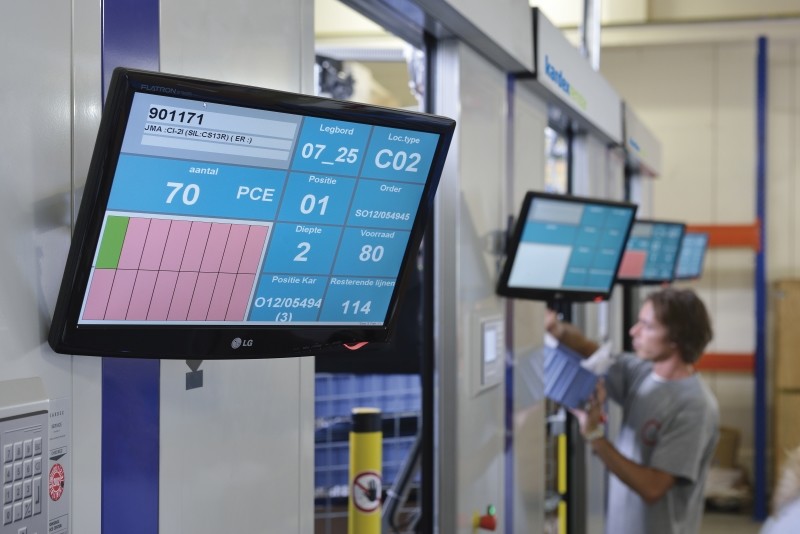
Exchange or “business as usual”?
Modern warehouse systems today have a technical lifespan of ten years or more, during which they can be adapted to current developments. But what about the control software? It's hardly conceivable that a company can operate successfully in the market with ten-year-old software. This raises the question for logistics professionals of whether and when action is needed, even though the hardware could easily continue to function efficiently for several more years.
Outdated warehouse management software that no longer adequately meets the demands of process efficiency and is no longer compatible with modern networked environments: This is a scenario that affects many companies. Nevertheless, the risk of switching to a modern software solution is often avoided. This is hardly surprising, as implementing new warehouse management software can easily cause anxiety for many logistics professionals, especially given large inventories with thousands of different items. Even after the switch, all items must still be recorded by the system and – just as importantly – easily located for retrieval or inventory checks.
Warehouse management software: old vs. new
However, implementing new warehouse management software, especially for large inventories, requires extremely careful preparation. In addition to clarifying time constraints and investment costs, the intralogistics structures and processes, as well as the warehouse layout and structural conditions, must be considered. Last but not least, it must be ensured that the new control system integrates seamlessly with the existing warehouse equipment. For this reason, it is advisable to implement the new software in close cooperation with the respective manufacturer of the warehouse equipment. After all, these manufacturers contribute not only their own logistics and IT expertise but also their extensive experience from similar projects in other companies.
Step 1: Which software for which requirements?
Initially, specialists conduct an on-site process analysis to understand the existing conditions and determine the customer's needs and requirements. These findings are then incorporated into a test system of the manufacturer's warehouse management software. Kardex Remstar, a producer of dynamic storage and retrieval systems, offers its customers the opportunity to test their equipment with Power Pick Global, Kardex Remstar's current control system.
Following initial training and instruction, warehouse staff and intralogistics managers use the test system to simulate their daily work environment – ideally in a practical way and daily over a certain period. A workshop then follows, incorporating the experiences gained. The results of this workshop form the basis for the specifications document, including any customer-specific adjustments, which in turn forms the foundation for the commercial proposal. Depending on the project size and available resources, the project duration is determined upon completion.
Two systems or one?
The next step depends on the outcome of the joint decision-making process. Depending on their structures, processes, and IT system landscape, Kardex Remstar offers its customers a variety of software solutions. For example, when dealing with outdated warehouse management software and a new SAP system, the question arises: Should the company implement the new software in such a way that it works subordinately with an existing SAP solution already in use? In this scenario, an interface transfers all warehouse-relevant orders from SAP to the control system (and receives them back for confirmation and inventory reconciliation). Warehouse staff must therefore operate two systems simultaneously, but can still leverage all the advantages of the new warehouse management software (WMS).
Another option would be to seamlessly integrate the warehouse management system (WMS) with SAP. With this SAP-oriented solution, warehouse employees would simply work via the SAP interface. Of course, it's also possible to connect the WMS to other ERP software systems, such as those from Microsoft Dynamics or Oracle .
Regardless of the solution a customer ultimately chooses, the relief of having successfully tackled this sensitive issue is paramount. The results speak for themselves: more efficient processes and improved material flow in the warehouse clearly demonstrate that the investment pays off relatively quickly. Depending on the number of items, throughput, and capital tied up in the warehouse, the return on investment (ROI) for upgrading the warehouse management software can be calculated at a maximum of one year.

